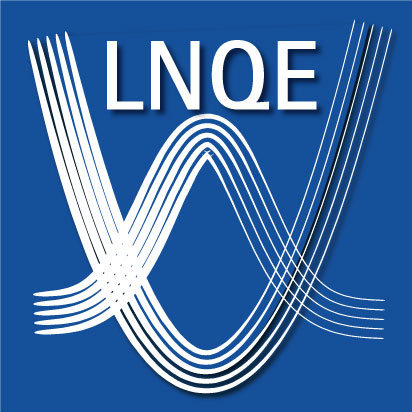Nanomembranes for synaptic memories

| Leitung: | Supervisor: Prof. Dr. Lin Zhang, LUH, Institute for Solid State Physics. Co-Supervisor: Prof. Dr. Fei Ding, LUH, Institute for Solid State Physics |
| Team: | Sreeja Satheesh |
| Jahr: | 2020 |
Memristor, memcapacitor, meminductor and memtranstor are next generation memories in non-Von Neumann, brain-like computing systems [Strukov2008]. These mem-elements, as opposed to the conventional circuit elements, are defined from the nonlinear relationship between two of the four basic circuit variables (charge, current, voltage, and magnetic flux) [Shen2018]. Interestingly, these artificial devices can demonstrate behaviour similar to synapses in the nervous system, allowing a new approach to human brain-like computing [Demming2013].
We will focus on the proof-of-principle demonstration of nanomembranes based synaptic memories. Our main motivation is that, the size effect in ultrathin nanomembranes will play an important role in the nonlinear synaptic devices. On one hand, the electrostatic conditions at the interfaces become increasingly important, and will affect the memory switching behaviors. On the other hand, the ultra-small thickness in nanomembranes will lead to greatly reduced operation voltages/currents, which is critical for realistic applications of synaptic memories. Also, large-scale integration of nanomembranes becomes possible in recent years, facilitating the construction of synaptic memory networks. We will employ our established experiences in the investigations and large-scale integrations of nanomembranes, and hence investigate new types of synaptic memories.
Figure: Human brain consists of about 1011 neurons and 1015 synapses. The “mem-elements” are key tools for the artificial implementation of synaptic connections in circuits. (Figure from Internet). (b) The scalability of synaptic memories is important for neural network type circuits. There has been great progress in recent years on the large-scale integration of nanomembranes, (Adv. Energy Mater. 4, 1301631 (2014)
[Strukov2008] D. Strukov et al., “The missing memristor found” Nature 453 80 (2008).
[Li2017] C. Li et al. Nature Communications 8, 15666 (2017).
[Shen2018 ] J. Shen et al. Advanced Materials 30, 1706717 (2018).
[Demming2013] A. Demming et al., “Synaptic electronics”, Nanotechnology 24, 380201 (2013).








